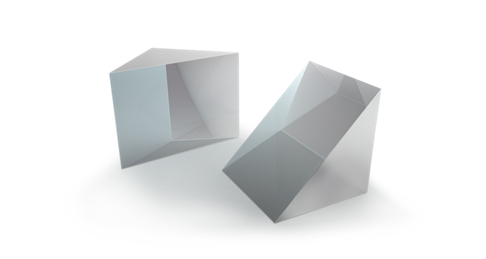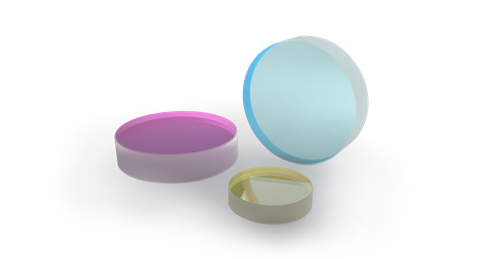KTP crystals
Main features
- High nonlinearity
- Nonhygroscopic crystal
- Great mechanical stability
- Wide transparency range from 350 nm to 4,5 µm
- Broad angular and thermal acceptance
- Broad type I and II non-critical phase-matching range
Application examples
- Low and medium power frequency doubling of Nd-doped lasers
- KTP OPO and ZGP OPO tandem for mid-infrared generation
- Description
- Properties
- Standard specifications
Potassium titanyl phosphate (KTiOPO4, KTP) crystals are advantageous due to their high nonlinearity, great mechanical stability, high optical quality, and transparency range of 350 nm - 4,5 µm. These features determine the wide application of KTP crystals as a nonlinear medium. It is an excellent solution for frequency doubling applications of Nd-doped lasers, especially for low and medium power applications, both intra- and extra-cavity design. Besides, these crystals can be used as a nonlinear OPO medium for IR generation up to 4 µm and used as a pump source for mid-IR nonlinear crystal-based optical parametric oscillators, such as ZGP OPO. KTP is susceptible to photochromic damage (grey-tracking), which causes the deterioration of nonlinear conversion efficiency. 4Lasers provide high grey track resistance (HGTR) KTP crystals as a solution, which significantly improves the grey-track resistance and overall performance. HGTR KTP crystals extend the use of KTP as a nonlinear medium to high-power applications.
| Physical and optical properties | |
|---|---|
| Chemical formula | KTiOPO4 |
| Crystal structure | Orthorhombic, mm2 |
| Lattice parameters | a = 12,814 Å, b = 6,404 Å, c = 10,616 Å |
| Optical symmetry | Positive biaxial (2VZ = 37,4° @0,5461 μm) |
| Density | 2,945 g/cm3 |
| Mohs hardness | 5 |
| Transparency range | 350 nm - 4,5 μm @"0" transmittance level |
| Sellmeier equations (λ in µm) | nX2 = 3,0067 + 0,0395/(λ2 - 0,04251) - 0,01247 λ2; nY2 = 3,0319 + 0,04152/(λ2 - 0,04586) - 0,01337 λ2; nZ2 = 3,3134 + 0,05694/(λ2 - 0,05941) - 0,016713 λ2 |
| Refractive indices | nX = 1,7404; nY = 1,7479; nZ = 1,8296 @1064 nm |
| KTP crystals | |
|---|---|
| Orientation accuracy | <30 arcmin |
| Clear aperture | >90% |
| Face dimensions tolerance | +0,0/-0,1 mm |
| Length tolerance | ±0,1 mm |
| Parallelism error | <20 arcsec |
| Perpendicularity error | <5 arcmin |
| Protective chamfers | <0,1 mm at 45° |
| Surface quality | 10-5 S-D |
| Wavefront distortion | <λ/8@632,8 nm |
| Coatings | AR(R<0,25%)532+1064 nm on both faces |
| Laser-induced damage threshold | >500 MW/cm2@1064 nm, 10 ns |
| Mount | Unmounted |


